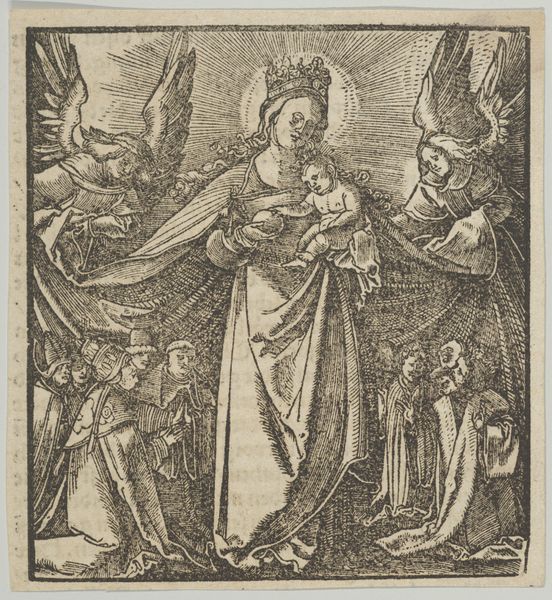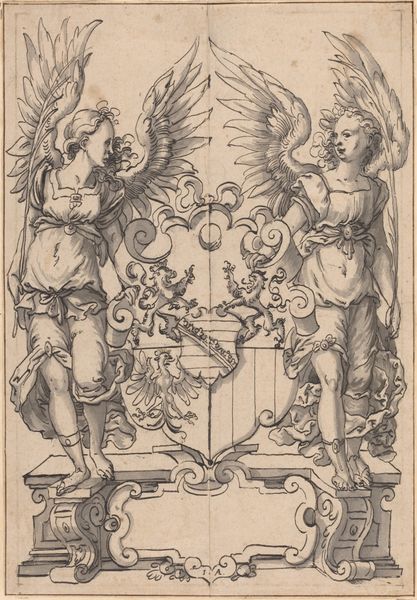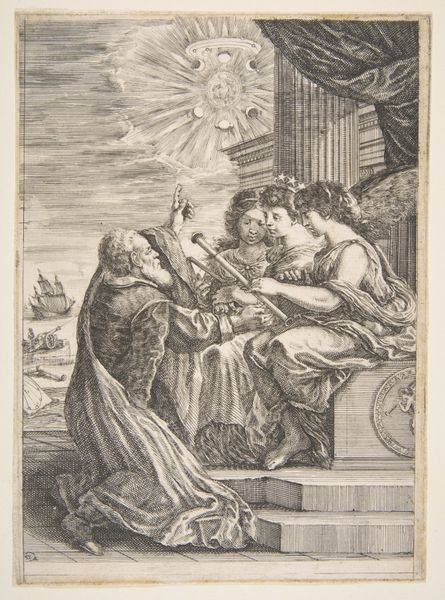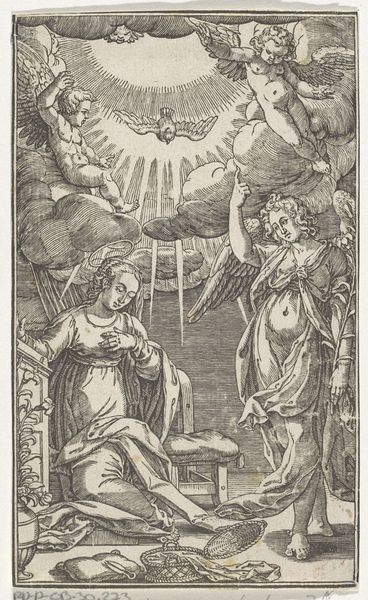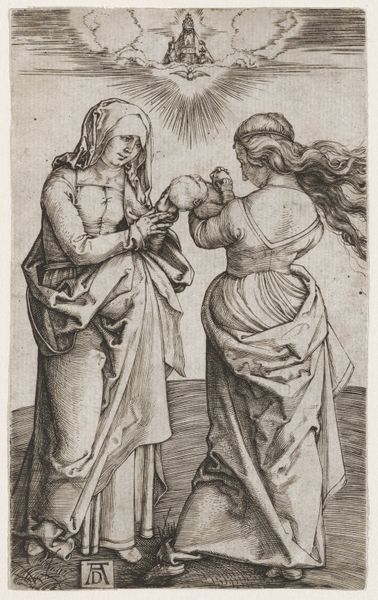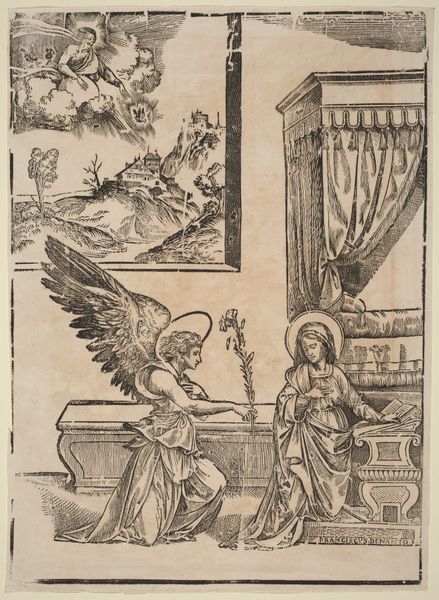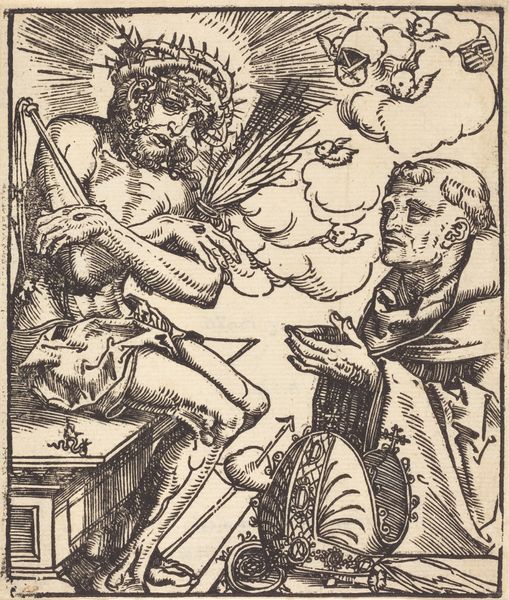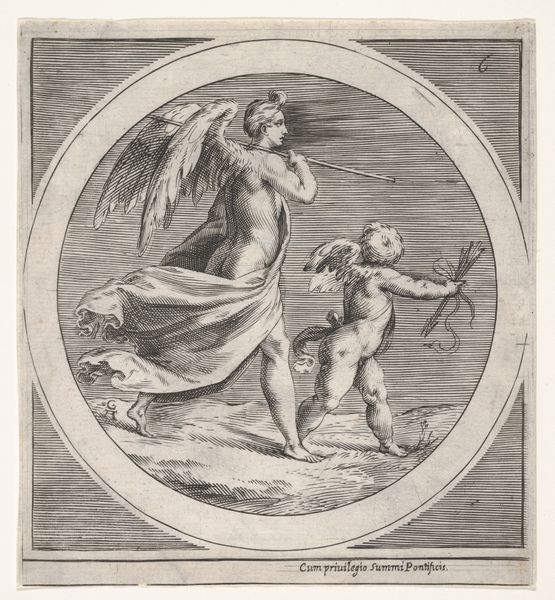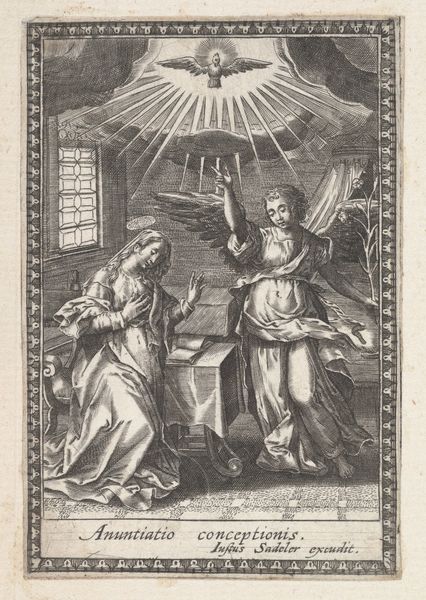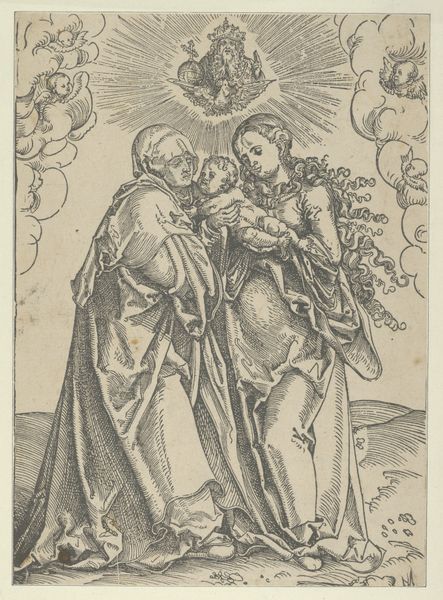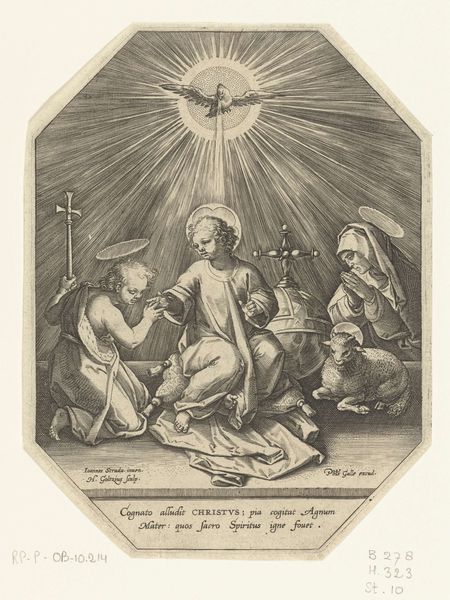
The Holy Trinity, from Hymmelwagen auff dem, wer wol lebt... 1517
0:00
0:00
drawing, print, woodcut
#
portrait
#
drawing
# print
#
figuration
#
woodcut
#
history-painting
#
northern-renaissance
Dimensions: Sheet: 4 7/16 × 4 1/8 in. (11.3 × 10.5 cm)
Copyright: Public Domain
Curator: My first impression? Severely linear. Is it a woodcut? Editor: Indeed. This work, currently held at the Metropolitan Museum of Art, is entitled "The Holy Trinity, from Hymmelwagen auff dem, wer wol lebt...", a woodcut created around 1517 by Hans Schäufelein. It is part of a larger book project. Curator: Schäufelein! A student of Dürer, wasn't he? One sees echoes of that graphic precision, particularly in the drapery folds. There’s a tangible sense of weight despite its relatively small scale. And the lines radiating from the dove! It almost feels like a halo of pure energy. Editor: He certainly carries on some of Dürer's formal conventions. Look at how the Holy Trinity is presented; God the Father, the Son, and the Holy Spirit are visually aligned in this pyramidal structure—quite Renaissance, really. It's asserting a very specific theological hierarchy. And its circulation as a print also democratized religious imagery during that period, which should not be understated. Curator: And speaking of symbols, the orb held by God the Father–surely representative of dominion, earthly and divine authority all wrapped up in a single form? And their respective scepters also serve that purpose, I believe. Editor: Right. Symbols of earthly rule translated into a heavenly context. The scepters certainly mark the authority they have. One aspect I find intriguing is its engagement with the Northern Renaissance context. Compared to its Italian counterparts, the woodcut seems less concerned with anatomical precision. Curator: Though arguably, the severe abstraction imbues the image with even greater emotional force. The woodcut itself speaks to more popular artistic consumption as well; a means of disseminating religious ideals in sixteenth-century society. Editor: It’s a complex layering of the sacred, the political, and, of course, the artistic. I was taken by that geometric pattern dominating the overall image that leads us from the dove to both Father and Son. The piece gives insight into art's roles within religion and Northern European social frameworks. Curator: A dense nexus indeed, worthy of much meditation, I think! Thank you, I appreciate the historical grounding you provided. Editor: A perfect final insight to frame the work, wouldn't you say?
Comments
No comments
Be the first to comment and join the conversation on the ultimate creative platform.
